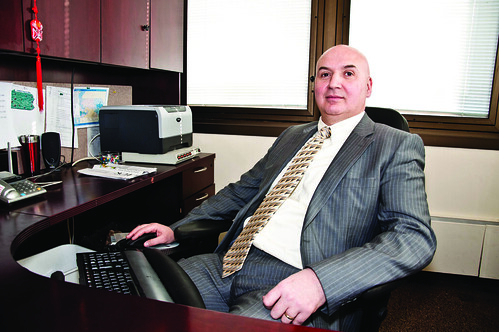
On April 20, 2010, BP’s Deepwater Horizon oil rig exploded off the coast of New Orleans, resulting in the world’s largest accidental oil release. Along with students, Michel Boufadel, a civil and environmental engineering professor, traveled to the Gulf Coast the following summer to study the effects of the spill and make suggestions as to how to clean up the disaster. Boufadel sat down with The Temple News to talk about his experiences and future plans for his organization, the Center for Natural Resources Development and Protection.
The Temple News: What is your area of study?
Michel Boufadel: I teach environmental engineering, which is how to deal with contaminates in the environment and then how to treat them in the lab. I try to develop techniques to understand what affects the fate of oil in the environment. I also try to develop engineering methods to accelerate the depletion of oil in the environment. One of these techniques is bioremediation.
TTN: What is bioremediation?
MB: There are indigenous microorganisms in the environment that can eat oil after an oil spill and turn it into a less hazardous material. We make the environment more suitable for the microorganisms to grow and thrive. It is the least intrusive method of removing oil from the ground after an oil spill – 95 percent of the oil can be eaten up by these microorganisms.
TTN: What organization do you work with?
MB: I started the Center for Natural Resources Development and Protection in 1999, and I am the director. I hire many students from the School of Engineering and Architecture and the College of Science and Technology. We develop and submit proposals for alternative solutions to environmental problems.
TTN: Tell me about the work you did in the Gulf Coast.
MB: After the Deepwater Horizon, or BP oil spill, in the gulf we had students set up monitoring sites from Louisiana to Florida. At these sites we measured environmental conditions. We found that the oil in Louisiana isn’t going to biodegrade fast. We predicted it would take 15 years to biodegrade, and because of this, we recommended the beaches be scraped, and the sand be treated offsite. In Alabama and Florida we found out the oil will biodegrade in five years. In this case, we had to do a net environmental benefit assessment. In other words, will the environment be disrupted more from the oil’s presence over five years or from the scraping of the beaches?
TTN: What is the Center for Natural Resources Development and Protection’s next project?
MB: We are getting $1.5 million to help clean up after the Exxon Valdez oil spill that occurred off the coast of Alaska in 1989. Today, there are still 100 tons of oil on the beaches in Alaska. Five years ago we went there and tried to figure out why the oil was still there. We found out it was because of a lack of oxygen. Now we are going this summer to do the actual cleanup, and I am looking for students to help with the monitoring and management.
TTN: What is the negative environmental effect of leaving oil in the ground?
MB: Environmentalists found out with the Deepwater Horizon spill there will be minimal risks to humans in the next five years. But they found that if turtles lay their eggs on the beaches where there is oil, they will have defective offspring. On the other hand, if all of the sand is removed to be treated off-site, the ecosystem will be affected tremendously. It is not 100 percent based on science. At some point the public needs to assess the risks and decide what [it wants] to do.
Amy Stansbury can be reached at amy.stansbury@temple.edu.



Be the first to comment